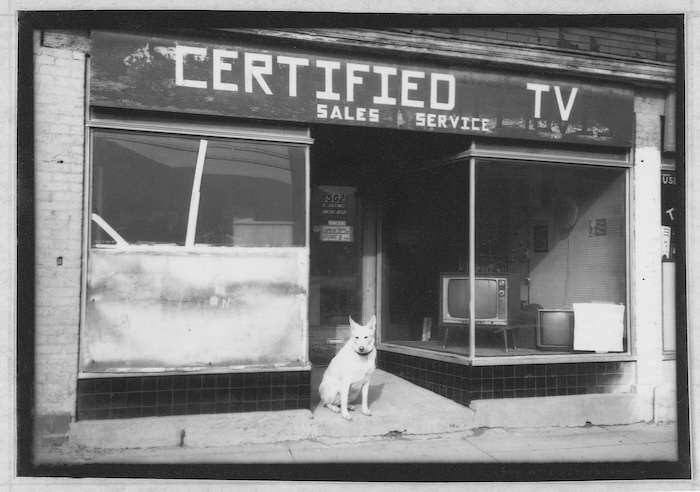College student’s 1982 photos revisited by modern pros
For his 1982 senior project at SUNY New Paltz, Patrick Prosser toted a camera around the streets of Beacon, his hometown. In May, about the time he received his bachelor of fine arts, Prosser exhibited 20 photos at what is now the Howland Cultural Center.
When Prosser, who grew up at 14 Miller St., died from pancreatic cancer in 2023 at age 64, his widow, Kathy, donated the 1982 shots to the Beacon Historical Society.
Theresa Kraft, president of the Howland Cultural Center, read about the gift in the society’s newsletter and arranged to display excerpts from the collection. A team that included photographers Tony Cenicola, Michael Goldfarb, Pierce Johnston and Willam Loeb winnowed the selections to 38 photos before three of the curators fanned out to revisit some of the locations.
The exhibit’s title, Work in Decay, borrows from Prosser’s 1982 exhibit. His subtitle had been “The City of Beacon, New York”; the new one is “The Renaissance of Beacon — Then and Now.”
In 1982, Prosser captured mostly decay. Nearly every pane of glass in the abandoned factories and weatherbeaten buildings on and near Main Street is broken or boarded up, including the picture windows at Mozekos Market by the dummy light. In one photo, a crossing guard stands in front of the door.
Prosser combed ruins from the inside. In the factory that became the Roundhouse, he was enamored with the bathroom stalls: “The shape of the toilets and the simple arithmetic of the walls give this great feeling for the working man’s environment in Beacon,” he wrote. He also took interior shots of the abandoned Highland Hospital and a junk-filled apartment.
One photo shows Cisco, a white dog sitting in the decrepit doorway of Certified TV Sales & Service. Goldfarb’s photo of what is now the Maria Lago Studio captures a life-size sculpture depicting a human figure in anguish.
Enticed by structures, Prosser climbed vantage points like the Beacon Theatre and the firehouse that is now home to Hudson Beach Glass. Though he took a well-situated shot of the Mount Beacon Incline Railway gear-house, the photos of people could be Prosser’s apex. In “High Noon at Richie’s Bar,” a grizzled bartender plays cards with a patron wearing a dapper hat. Regulars scratched scrawl onto a 2×4 beam at the bar’s edge, along with the panel below, including the jab, “$100 fine to write here.”
(Pierce Johnston’s modern reply, “A Day at Melzingah Tap House,” focuses on a relaxed young bartender polishing a pint glass, flanked by two fancy, backlit cases with high-end hooch. In the background, the shelves are stocked with swag.)
One of Prosser’s favorite photos captured the owners of Beacon Auto Salvage, which once filled the Churchill Street parking lot with heavy machinery, car parts and mud. The father makes no attempt to smile while the son’s half-cocked grin hints at a brighter future, although he may just be resigned to his lot. “The whole history of Beacon can be told by their faces,” Prosser wrote.
The Howland Cultural Center, at 477 Main St., is open from 1 to 5 p.m. on most Saturdays and Sundays. “Work in Decay” continues through July 21.



